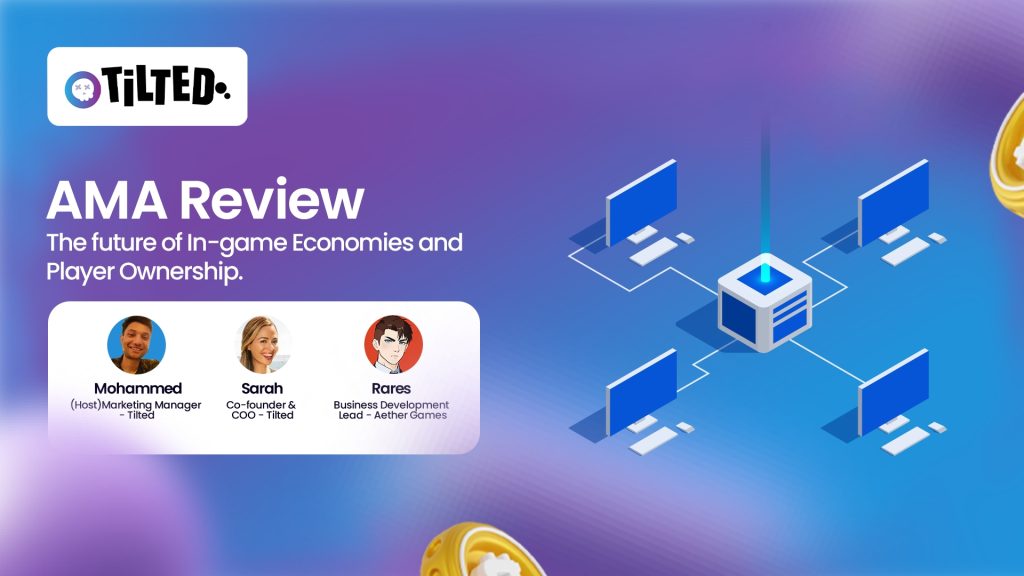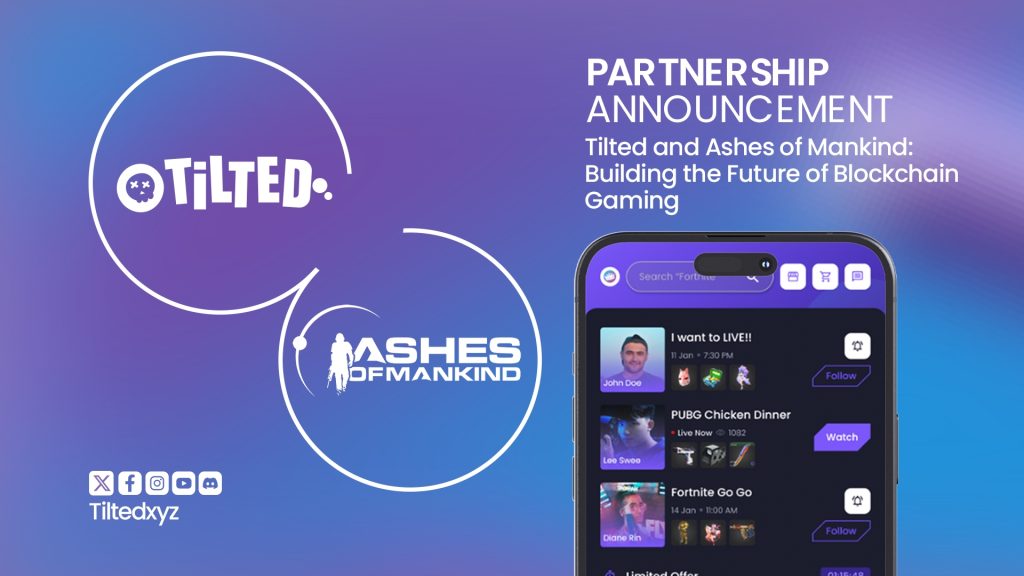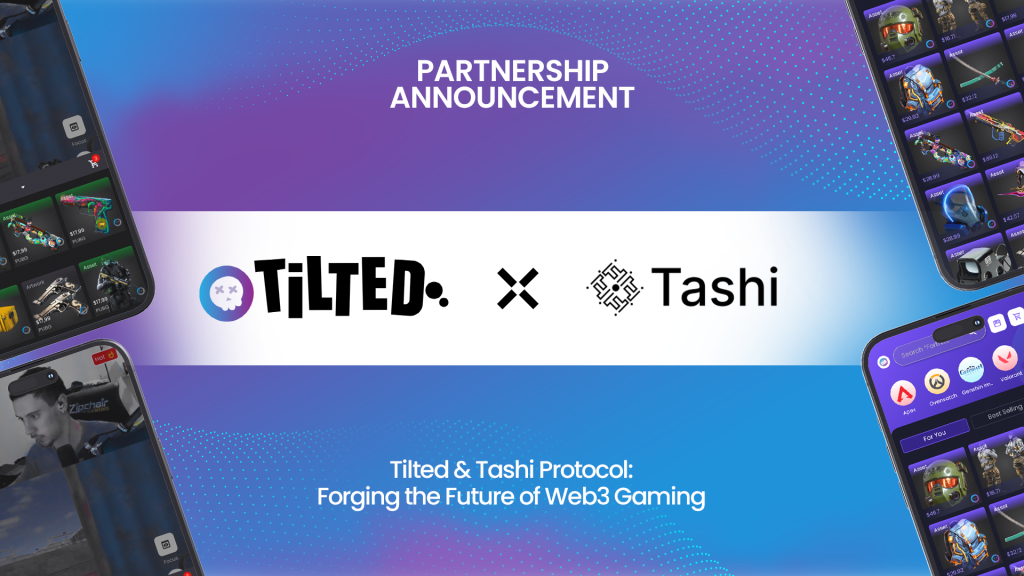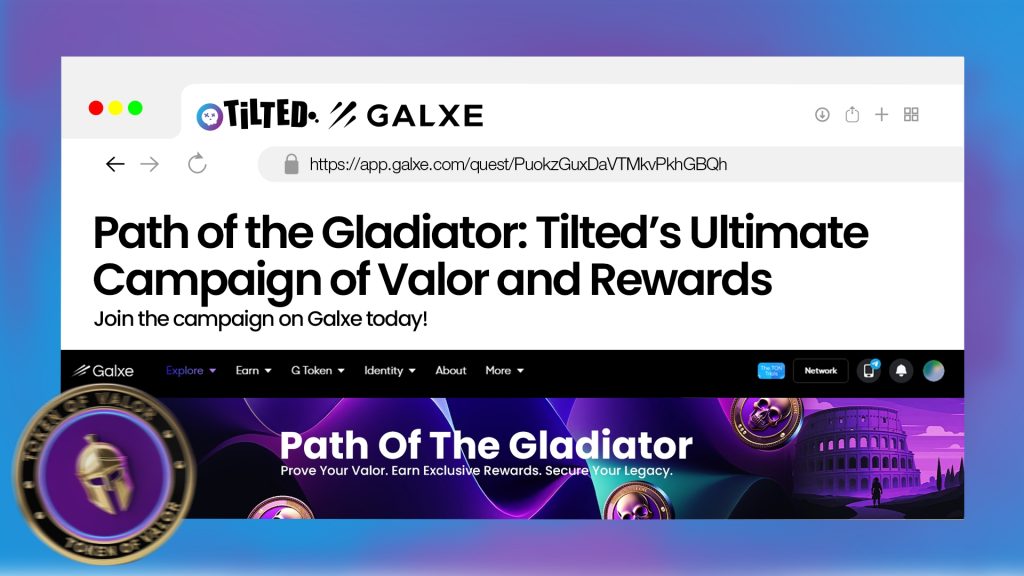Introduction
The recent Twitter Space session focused on player ownership and in-game economies, particularly how these aspects could evolve with blockchain technology. The conversation explored the limitations of current gaming models, the transformative potential of blockchain for players, and the challenges of implementing such systems in traditional gaming ecosystems. The session was facilitated by our host and featured insights from a knowledgeable guest speaker, whose expertise provided valuable perspectives on these topics.
Host:
- Mohammad, Marketing Manager, Tilted.
Guest Speaker:
- Rares ‘Dreadsong’ Alexandru, Business Development Lead, Aether Games.
Limitations of Traditional Gaming Models
Traditional gaming systems, as illustrated by popular titles like League of Legends, impose strict limits on player ownership. Alexandru highlighted the frustration that players often face when their accounts are banned after investing significant time and money into acquiring in-game assets. In conventional models, these assets are linked directly to the game and are lost if the account is restricted, resulting in substantial personal and financial loss. This centralized control model restricts players from having true ownership over their assets, effectively binding them to the game’s ecosystem without flexibility or security.
Blockchain Technology as a Game-Changer
Blockchain technology can shift the paradigm by ensuring true ownership of digital assets. Unlike traditional setups, blockchain allows assets to be stored in the player’s wallet rather than being confined to the game’s servers. This innovation empowers players with the ability to transfer assets between accounts or sell them on an open market.
For example, in card games such as Hearthstone or Legends of Runeterra, players often dedicate time and money to building competitive collections. However, when they decide to leave these games, their investment becomes sunk cost. By integrating blockchain, players can instead sell their cards, enabling new players to buy these assets and accelerate their in-game progress. This system promotes a circular economy that benefits both exiting and entering players.
Challenges in Implementing Blockchain in Traditional Games
Adapting blockchain technology into mainstream games comes with its share of challenges. One significant hurdle is the potential loss of control over in-game transactions for publishers. Traditionally, developers generate revenue through direct purchases from players, but an open market could shift transactions to player-to-player exchanges, potentially affecting the publisher’s earnings.
However, Alexandru pointed out that Web3 games have found solutions, such as charging royalty fees each time an asset is traded. These fees create a continuous revenue stream even in secondary markets. Moreover, game publishers can still create and introduce new assets for initial sales. This dual revenue strategy balances decentralization with profitability, addressing concerns about control and revenue loss.
Conclusion
The Twitter Space session highlighted the fundamental differences between traditional and blockchain-integrated gaming models. By focusing on asset ownership, blockchain technology has the potential to empower players, allowing them to retain control over their investments and participate in vibrant, player-driven economies. While challenges such as adapting business models persist, the solutions employed by Web3 games offer a path forward for publishers looking to explore this evolving space. The conversation opened up thought-provoking insights into the future of gaming economies, underlining the promise of a more equitable gaming experience.



